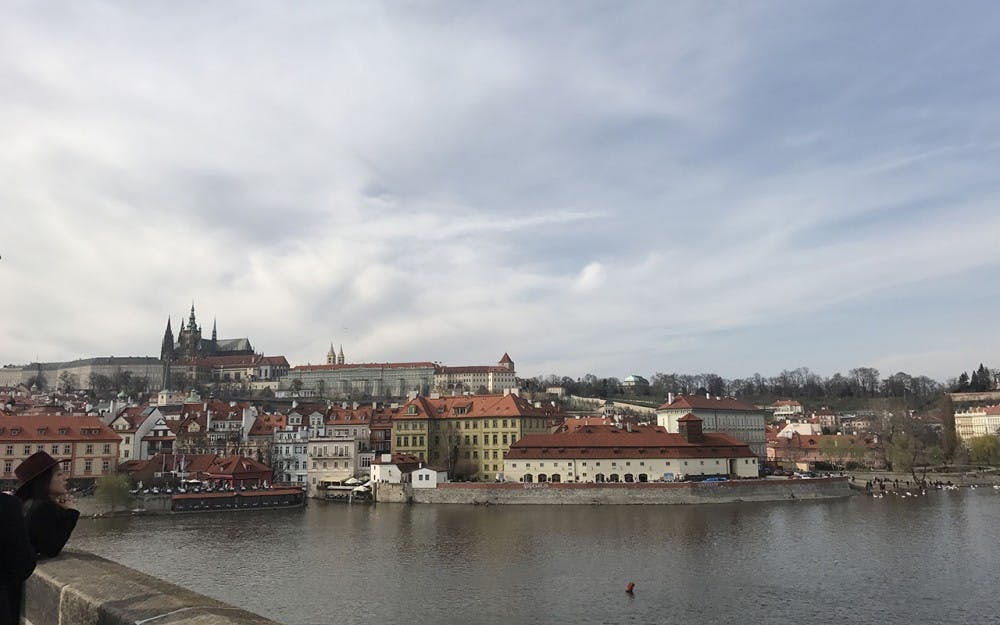As spring rears its head and I approach the halfway point of my semester abroad in Maastricht, the Netherlands, I’ve been begrudgingly logging hours in the library tackling midterm projects and papers while 60-degree sunny days call my name.
After two months of seemingly uninterrupted platinum gray skies and near-freezing weather, we’ve finally seemed to turn the corner. After taking care of my commitments in the classroom, I’ve wasted no time in enjoying the sun and traveling. On Friday, I flew to Prague, Czechia, for the weekend.
The Czech capital is situated in the heart of central Europe. Prior to World War II, then-Czechoslovakia sought to remain neutral in the simmering conflict between the Germans and the Soviets, but the Communist Party rose to power toward the end of the 1940s.
Czechoslovakia was not part of the Soviet Union, but the nation was democratized in 1989’s peaceful Velvet Revolution, around the same time as the fall of the U.S.S.R.
Even more so than its neighbors to the west, many of Prague’s most magnificent architectural features bear some religious significance. No matter where you are, you’re not very far from a Catholic church, and this is particularly true in Prague’s Old Town.
Although the city is filled with a variety of ethnic cuisines, I wanted to try traditional Czech food. Old Town was filled with street food vendors, and my salivary glands were becoming more active with each step I took. Contrary to what I had expected, my heaping plate of pork and potatoes with cabbage and sausage was surprisingly expensive, but I don’t regret tasting the local cuisine.
My hostel was a few short blocks from the Old Town Square, which bustled with tourists and locals for the duration of the weekend.
Throughout Prague’s history, Old Town Square has been the site of political events, including the 1948 speech that declared the start of Czechoslovakia’s socialist period. On Sunday, demonstrators occupied the square in protest of Russian influence in Ukraine.
Today, the Eastern influence is still very prominent. Prior to this weekend, I had not traveled farther east than Berlin. Although Germany and Czechia share a border, the cultures are strikingly divergent. While Germany, the Netherlands and neighboring countries all belong to a family of related western European cultures, Czechia is a different animal.
Over the last two months, I’ve grown accustomed to the warmth of the Dutch people. The Dutch language even has its own word — gezellig — that people use to describe the hard-to-capture coziness of the Netherlands.
The word has no direct English translation. In Prague, however, people are much more cold and aloof, particularly to tourists. At night, it was difficult to walk 50 feet without being approached by a drug dealer.
At several of the restaurants I visited, waiters seemed impatient and unconcerned. On Sunday night, a friend and I visited a sports bar in Prague’s Old Town to watch the regional finals of the NCAA Men’s Basketball Tournament, and we were berated and called “very impolite” by our server for not ordering more than three drinks over the course of our barely one-hour-long stay. After the awkward and mildly aggressive exchange, we thought it best to stream the remainder of the game from the hostel.
While a few of my interactions in Prague did not help me feel terribly welcome, the quaintness of the city and its narrow cobblestone streets did. Of course, I met my fair share of very warm and welcoming Czechs as well. When a friend lost his wallet, the police were very attentive in helping him find it.
Next week, I’ll be traveling out of the continent to Marrakech, Morocco. Prague was much different than any other place I had experienced to this point, but it’s safe to say Marrakech will be a different world.
dkilcull@indiana.edu






